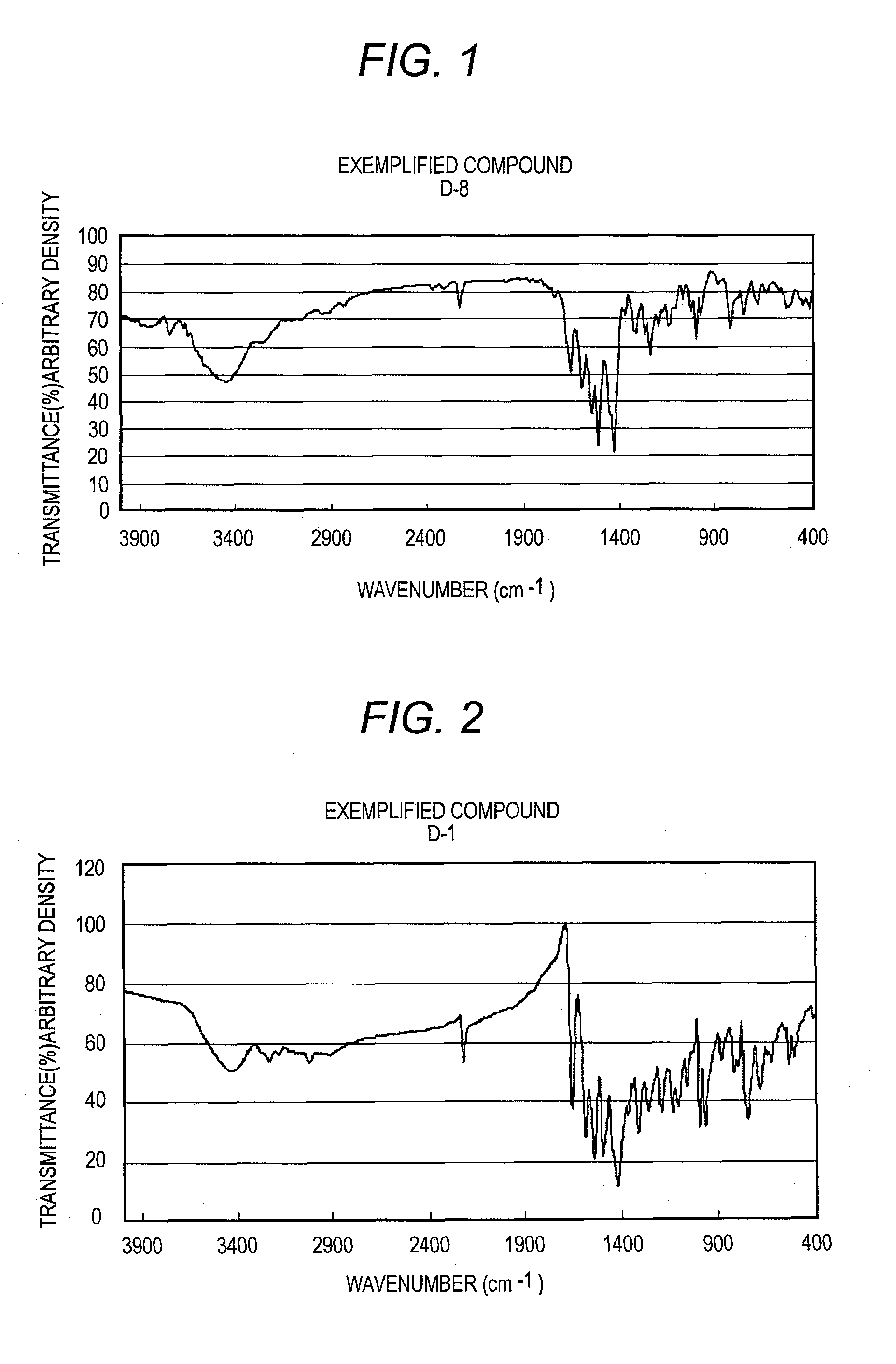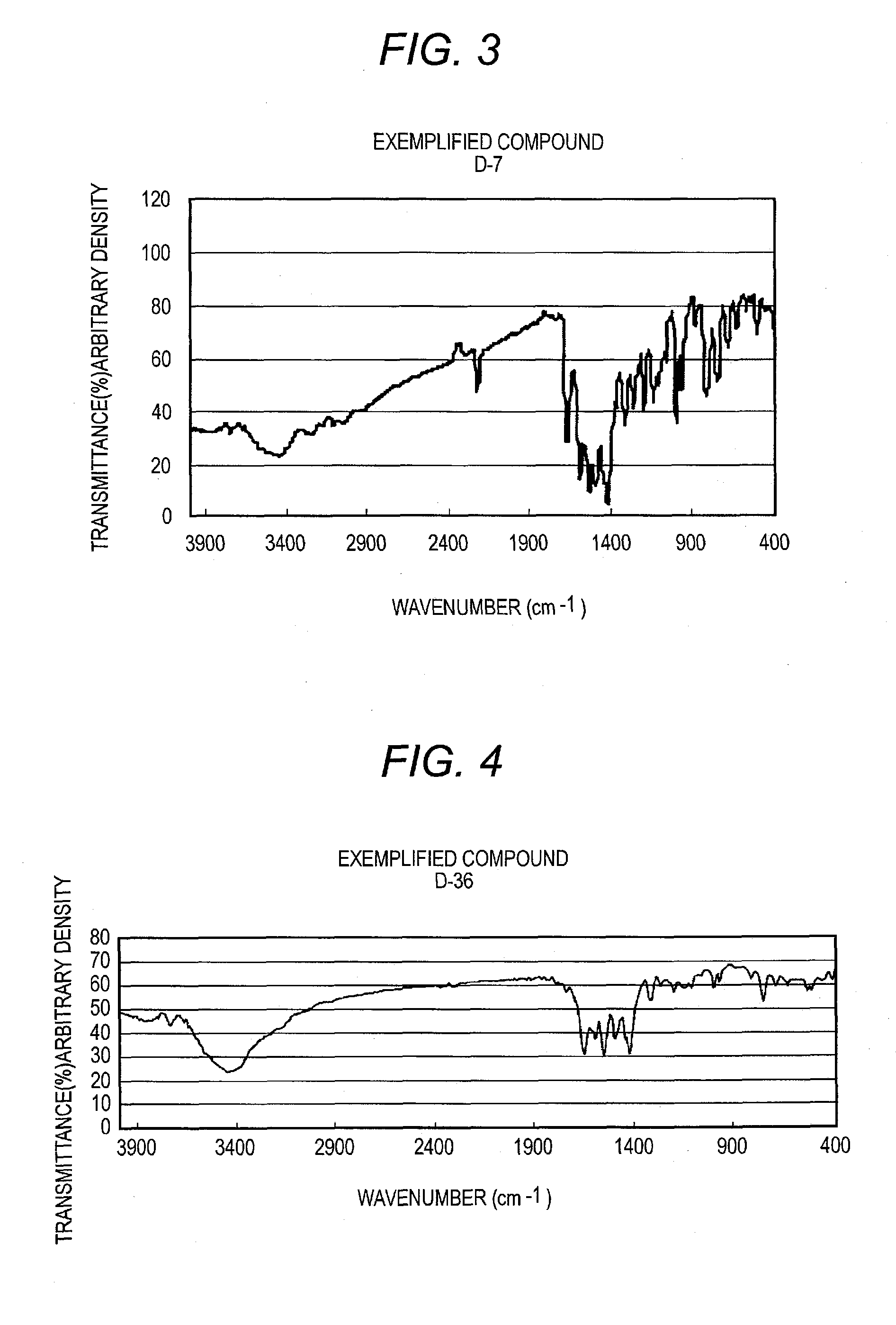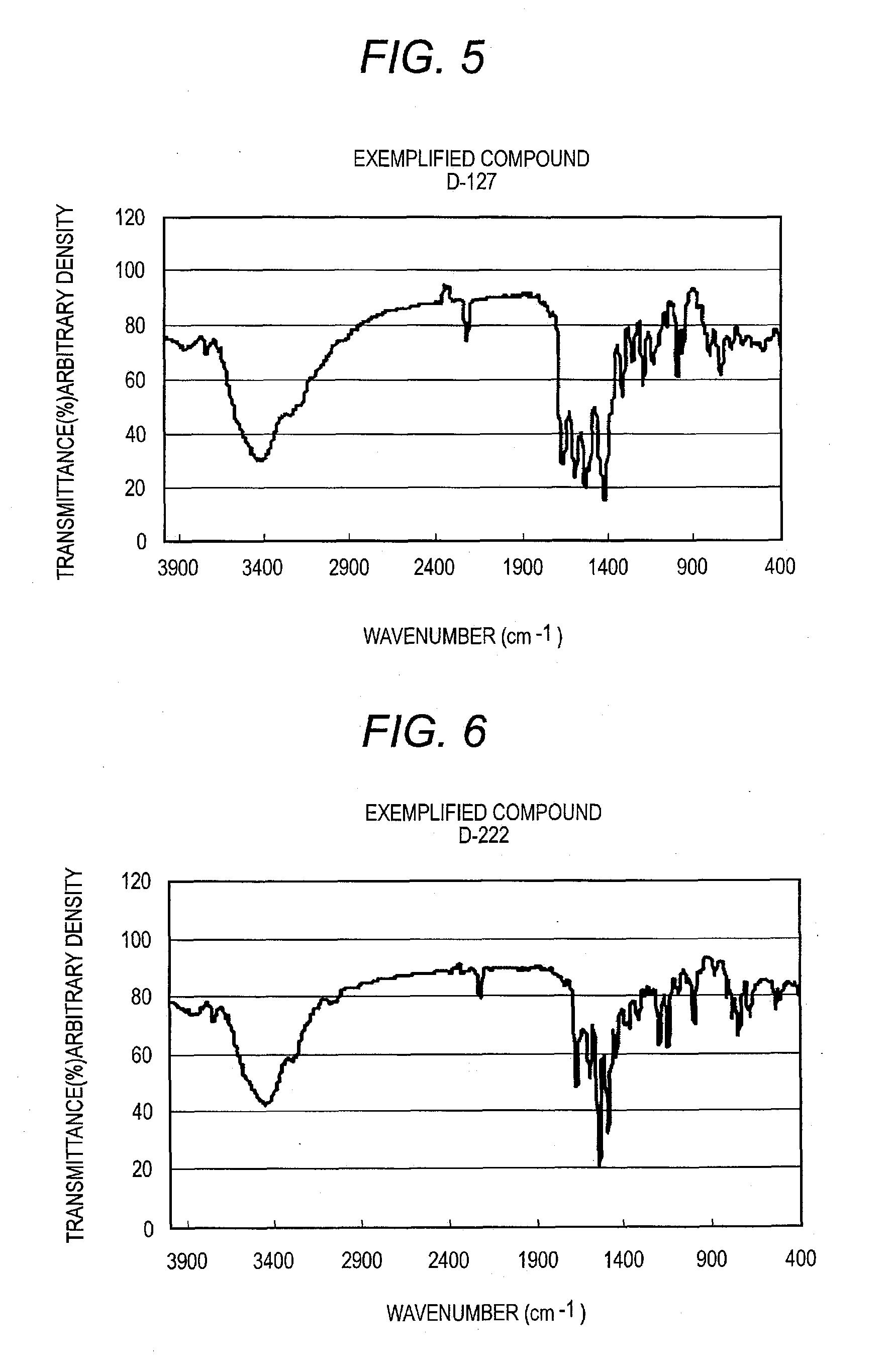Process for producing azo compounds, pigment dispersion, coloring composition, ink for inkjet recording, coloring composition for color filter, and color filter
a technology of azo compounds and pigments, applied in the direction of coupling reactions in azo dyes, photosensitive materials, instruments, etc., can solve the problems of difficult to allow the compatibility of colorants with each other, difficult to produce azo pigments, and inability to quickly realize colorants with absorption characteristics. capable of realizing, and achieve excellent fastness, high tinctorial strength and hue, excellent coloring characteristics
- Summary
- Abstract
- Description
- Claims
- Application Information
AI Technical Summary
Benefits of technology
Problems solved by technology
Method used
Image
Examples
synthesis example 1
Synthesis of Azo Pigment (Formula (9))
[0315]15 g of the compound represented by formula (7) is added to 120 ml of phosphoric acid and is completely dissolved at room temperature, and this solution is ice-cooled to keep the temperature to 5° C., and 24.9 g of nitrosylsulfuric acid (40% solution in sulfuric acid) is dropwise added thereto, followed by stirring for 45 minutes. 0.5 g of urea is added to this reaction solution to obtain a diazonium salt solution. This diazonium salt solution is dropwise added over 40 minutes to a solution prepared by dissolving 20 g of the compound represented by formula (8) in a mixed solvent of N-methylpyrrolidone (NMP) (196 ml) and 1-methoxy-2-propanol (196 ml) and then sulfuric acid (3.6 g) is dropwise added thereto, while keeping the temperature of the solution at 15 to 18° C. The thus-obtained solution is stirred for 2 hours while keeping at 20 to 25° C., then 750 ml of methanol is added thereto and, after stirring for 2 hours under heating, the so...
synthesis example 2
Synthesis of Azo Pigment (Formula (9a))
[0317]15 g of the compound represented by formula (7) is added to 120 ml of phosphoric acid and is completely dissolved at room temperature, and this solution is ice-cooled to keep the temperature to 5° C., and 24.9 g of nitrosylsulfuric acid (40% solution in sulfuric acid) is dropwise added thereto, followed by stirring for 45 minutes. 0.5 g of urea is added to this reaction solution to obtain a diazonium salt solution. This diazonium salt solution is dropwise added over 40 minutes to a solution prepared by dissolving 18 g of the compound represented by formula (8) and 2 g of the compound represented by formula (3c) in a mixed solvent of DMSO (196 ml) and 1-methoxy-2-propanol (196 ml) and then phosphoric acid (15.5 g) is dropwise added thereto while keeping the temperature of the solution at 15 to 18° C. The thus-obtained solution is stirred for 2 hours while keeping at 20 to 25° C., then 750 ml of methanol is added thereto and, after stirring...
synthesis examples 3 to 10
[0319]Procedures are conducted in the same manner as in Synthesis Example 1 to obtain D-1, D-7, D-20, D-36, D-127, D-222, D-207, and D-246.
PUM
| Property | Measurement | Unit |
|---|---|---|
| 2θ±0 | aaaaa | aaaaa |
| 2θ±0 | aaaaa | aaaaa |
| 2θ±0 | aaaaa | aaaaa |
Abstract
Description
Claims
Application Information
 Login to View More
Login to View More - R&D
- Intellectual Property
- Life Sciences
- Materials
- Tech Scout
- Unparalleled Data Quality
- Higher Quality Content
- 60% Fewer Hallucinations
Browse by: Latest US Patents, China's latest patents, Technical Efficacy Thesaurus, Application Domain, Technology Topic, Popular Technical Reports.
© 2025 PatSnap. All rights reserved.Legal|Privacy policy|Modern Slavery Act Transparency Statement|Sitemap|About US| Contact US: help@patsnap.com



